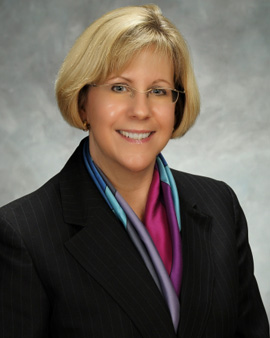
Joyce De Leo, PhD, ELAM '02
WittKieffer
July 24, 2019
As an ELUM and a search consultant at WittKieffer, I wanted to share some thoughts about CVs, resumes and executive summaries — they can all be very confusing!
Let's start with the difference between a CV and resume. CVs have no length limit (which can be a problem…), while resumes are typically one to two pages long. A CV details the whole course of the candidate's academic career, whereas a resume summarizes skills and work experience. In academic medicine, we often use the term executive summary instead of resume (I assume because "executive" adds gravitas) but the goal is to highlight one's leadership accomplishments rather than being a detailed tome recounting one's entire academic life.
A curriculum vitae, which is Latin for "the course of your life" and often shortened as CV or vita, is a written overview of someone's life's work. Vitae often aim to be a complete record of someone's career, and can be extensive. At academic medicine institutions, we are encouraged to include every paper, abstract, talk, grant submission and teaching session, as well as a list of all mentees. Often these read more like the tables included in training grants than an overview of someone's life's work. This information is critical for promotion and tenure. It is often used to address a faculty member's expertise in specific academic missions, and it is scrutinized by departmental and institutional promotion committees. This is an internal CV.
As you search for your next position or leadership role, an external CV takes on a new purpose and format. In most academic leadership recruitments, candidates are asked to provide both a cover letter (letter of interest geared to the position and leadership profile, not a summary of your career) and a CV. For an external CV, front-load the important information: education/training, leadership roles with bulleted major accomplishments, awards, editorial boards, grant review committees, all funding (past and present, with detailed information about PI and grant amounts in a consistent format), publications and major invited presentations. Some search firms only copy the first 10 pages of a CV for committee binders if they are not using a secure electronic portal. In my role, I look for the "meat" of the CV, and oftentimes the most important information is embedded on pages 44 and 45 of a 60-page CV.
In an external CV, it is not necessary to include abstracts, all of your local and regional talks/presentations, and a list of mentees (with their accomplishments). We understand that everyone mentors, especially women, since this is clearly a part of a career in academics. In some CVs I have reviewed, the mentees' successes are better highlighted than the candidate's.
Consider an external CV as an expanded executive summary and not a full report of your entire career. Search committee members and search consultants review many CVs, so they want the most important information without the need for a table of contents!
A few additional hints: Do not list submitted grants that were not funded. We all recognize that ELAM fellows and ELUMs are tenacious, but do not highlight the failures. Also, do not list "selected" publications. I always ask candidates which ones were not included and why?
The executive summary can be used either as a separate document or incorporated into the external CV. Some leadership roles require this summary while others — especially in academic medicine leadership searches — do not ask for a separate executive summary. The critical piece — as ELAM encourages — is to include your leadership accomplishments under each title with quantifiable data that aligns with the position you are applying for. In the ELAM program, you were asked to generate an executive summary. This should be regularly updated after you graduate, with metrics of leadership success. Don't wait until you apply for a leadership opportunity to update your CV. You will be busy and may have to submit an outdated CV or, worse, you may decide not to apply for a leadership role because you do not have the time to update your current titles and accomplishments. I recommend that you schedule one hour each month in your calendar to update your CV, paying particular attention to the external one.
Joyce De Leo, PhD, ELAM '02
WittKieffer